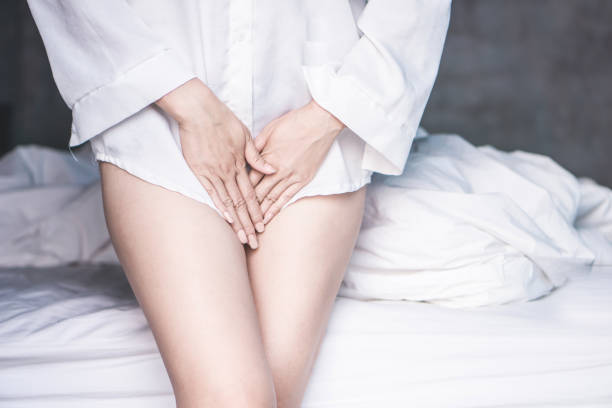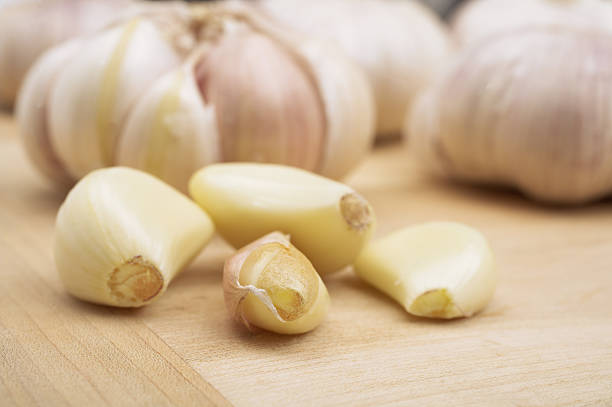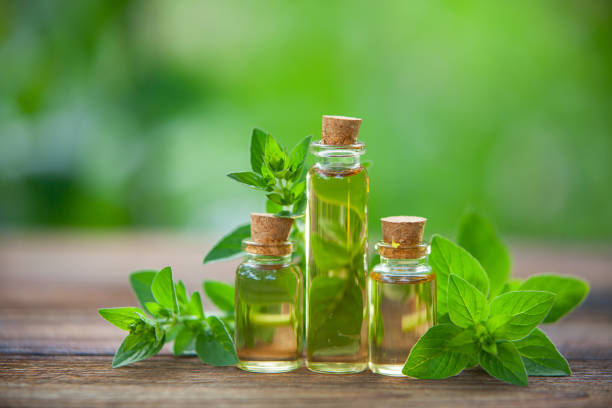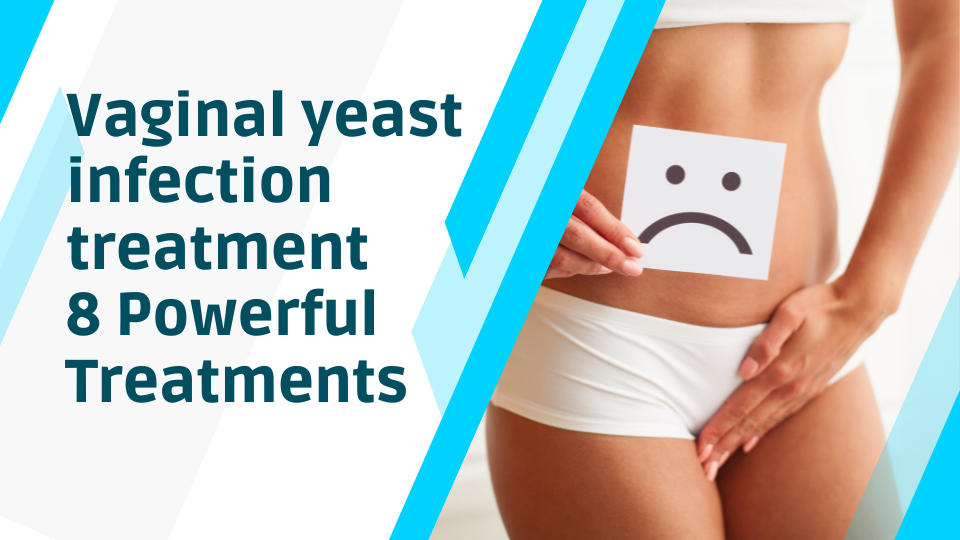Have you ever heard about Vaginal yeast infection treatment? Many individuals are uncomfortable because they have a yeast infection and wish they had never heard about it. If you count among them, you need to read this particular piece on the site. If you can understand how a yeast infection develops and the symptoms, you will have a greater chance of curing yourself of the condition.
An overgrowth of the fungus Candida albicans, more commonly known as yeast, is the cause of the common illness known as a yeast infection. This infection manifests itself through symptoms such as vaginal burning and itching, redness and swelling in the vaginal tissues, and irritation in the regions immediately around the vagina.
Table of Contents
What is a Vaginal yeast infection and its treatment?

A vaginal yeast is a fungus known as Candida albicans that leads to a yeast infection, also referred to as candidiasis. This fungus may be found naturally on the skin and in the vagina, but it can produce symptoms such as itching, burning, swelling, and discomfort when it spreads uncontrollably.
Because an infection does not cause by another organism like bacteria, a yeast infection is distinct from other vaginal infections. Yeast infections may manifest themselves in a variety of ways. Instead, this condition arises when the body’s immune system has difficulty eliminating the fungus.
Visit your primary care provider for a diagnosis and treatment plan if you have any symptoms, such as itching or burning, that might indicate a yeast infection.
What is vaginal yeast infections

Candida is the name of the fungus that is responsible for vaginal yeast infections. It is usual to be present in your body, but sometimes it may go out of control and create an infection.
Having sex without protection, using a diaphragm or condom that has not been changed from one sex partner to another, sharing sex toys with someone who has an infection, or having an infection in your mouth or throat can Yeast infections can also be spread through unprotected sex.
Vaginal yeast infections cause a painful and itchy feeling in the vagina. It is possible that the discharge may be heavy and range in color from white to yellowish and that you will experience some burning when urinating.
Visit your primary care physician as soon as possible if you suspect that you have a yeast infection so they can start treating it immediately.
Treatment:
Vaginal yeast infection treatment: Over-the-counter solution
Over-the-counter antifungal medicines, such as creams or pessaries, may be obtained to treat vaginal yeast infection treatment. These treatments can be found in several forms.
Vaginal yeast infection treatment: Boric acid
Boric acid capsules taken vaginally may effectively treat vaginal yeast infections in women. These could be particularly helpful for women with infections that return often.
The Centers for Disease Control administers a capsule containing 600 milligrams of boric acid daily for 14 days. The capsule should be injected vaginally. Always check with your primary care physician before buying any suppositories.
According to the findings of certain studies, a combination of flucytosine, an antifungal medication, and topically applied boric acid results in a successful treatment for roughly 70 percent of women. In this trial, the participants were females with yeast infections that did not respond to antifungal medications based on azoles.
Vaginal yeast infection treatment: Tea tree oil
The antifungal properties of tea tree oil may be effective in killing yeasts and other types of fungi.
Tea tree oil has been highly valued for centuries due to its antifungal effects. An analysis of the studies done on this essential oil revealed that it can destroy a wide variety of yeasts and fungi.
Candida albicans is one of the frequent yeasts that cause vaginal infections.
Suppositories for the vaginal area, including tea tree oil, have been demonstrated to be effective in treating vaginal fungal infections. Some women have found comfort in applying tea tree oil to a tampon.
Tea tree oil, however, should be used with great care since it can irritate the skin, and the vagina is especially susceptible to external irritants.
Because it is an essential oil, tea tree has to be combined with carrier oil before it can be used. When people want to soak a tampon, they may mix one ounce of warmed coconut oil with three to five drops of tea tree oil. It is essential to replace the tampon at regular intervals.
Additionally, some individuals have sensitivities to tea tree oil. It is essential to do a patch test on the forearm using diluted oil. If the test area, which should be about the size of a dime, does not show any signs of irritation after 12 to 24 hours, the oil may be acceptable for use in the more delicate genital region.
According to several other studies’ findings, a tea tree oil component known as terpinen-4-ol boosts the effectiveness of the standard antifungal medication fluconazole. This occurs when candida albicans have developed resistance to many drugs.
Vaginal yeast infection treatment: Probiotic supplements
Taking some probiotic supplements might provide a natural remedy for yeast infections. These may be purchased at drugstores, health food shops, or the internet.
Some manufacturers of probiotic supplements provide solutions designed specifically with women’s reproductive health in mind. These are designed to bring the vaginal bacteria and yeast population back into equilibrium. Oral consumption or vaginal insertion are the two methods for administering the supplements.
Women who suffered from persistent yeast infections took part in a trial conducted in 2012 and included the vaginal insertion of a probiotic tablet that had been carefully manufactured. A little over 87 percent of patients indicated that their symptoms had improved. The medication also had an impact on the yeast that was responsible for the infection that lasted for the long term.
For the trial, each woman took one tablet at bedtime for seven days. After that, they put one once every other night for three weeks. Following this, they reduced the frequency of their weekly therapy applications to once per week to maintain its effectiveness as a prophylactic step.
According to the findings of several other studies, the probiotic lactobacilli may have the ability to boost the efficacy of antifungal drugs that are being used by women who have a vaginal yeast infection.
Vaginal yeast infection treatment: Natural yogurt
Probiotics are the name given to the helpful bacteria found in natural yogurt that has not been sweetened or flavored. These positively contribute to health and assist in re-establishing a healthy balance of yeast and bacteria in the body.
According to the findings of a study that was conducted in 2006, some kinds of probiotics may be able to battle certain of the yeasts that are responsible for vaginal yeast infections. Even though the reviewers pointed up problems with a number of the research that was mentioned.
Vaginal yeast infection treatment: Coconut oil
Coconut oil has antifungal qualities, and research has shown that it is effective against the yeast Candida albicans. To alleviate symptoms, raw organic coconut oil may be taken orally or applied directly for the vaginal yeast infection treatment.
Coconut oil that has been heated may also be used for other essential oils that have a more potent antifungal effect, such as oil of oregano or tea tree oil.
You may get coconut oil from several retailers on the internet. Compare several goods and brands to choose the most suitable one for your needs; for example, some may be designed primarily for use in the kitchen rather than on the skin.
Vaginal yeast infection treatment: Garlic

Garlic is effective against vaginal yeast infection treatment. On the other hand, findings from more recent studies reveal that consuming garlic has little impact on the amount of yeast found in the vagina.
Some ladies have experimented with the internal use of garlic as an alternative to consuming it. They believe that yeast infections may be effectively treated by introducing a garlic clove that has been strung with a string into the vagina and leaving it there for the night. It is a low-risk home cure for yeast infection, even though there is no evidence to suggest that this helps.
Burning sensations and even permanent skin damage have been reported from those with sensitive skin. Persons with sensitive skin, for this reason, should not use garlic. Consumers should stop using the product immediately if the burning sensation worsens.
Additionally, it was shown that a vaginal cream containing garlic and thyme was just as efficient in treating yeast infection as a vaginal cream containing clotrimazole.
Vaginal yeast infection treatment: Oregano oil

The development of yeast could be slowed down or vaginal yeast infection treatment by wild oregano oil. Most oregano oil is produced using origanum marjoram, often known as common oregano, which has no unique qualities.
On the other hand, oregano oil produced from wild oregano, also known as origanum vulgare, includes two powerful antifungals, thymol and carvacrol.
Several studies have shown that using wild oregano oil may stop or decrease the development of Candida albicans. It is possible to inject capsules containing oregano oil into the vagina before bed. Alternatively, it may be rubbed into a tampon and inserted in the body before use. It is advised that you compare a few different goods.
FAQs
What is the fastest way to get rid of a yeast infection?
Taking an over-the-counter medicine to treat vaginal yeast infection treatment, such as Monistat or Canesten, is the quickest approach to eliminate the condition completely. These treatments are risk-free and very effective, and they should be able to alleviate the symptoms in about 48 hours.
What is the main cause of yeast infection?
Candida albicans is the primary causal factor of vaginal yeast infection treatment. This fungus is typically harmless and occurs naturally in the human body. But if the normal bacteria in your vagina are out of balance, you may be prone to an overgrowth of Candida albicans, which produces symptoms such as itching, burning, and vaginal discharge.
Can yeast infection be treated on its own?
Yeast infections can be treated. Candida is the fungus responsible for vaginal yeast infection treatment. This fungus resides in the vagina and colon, but if it gets out of hand, you can have symptoms such as itching, burning, discharge, and discomfort during urination or intercourse.
How do you treat a yeast infection on yourself?
There are many methods to cure a vaginal yeast infection treatment on your own. You may try utilizing over-the-counter creams, lotions, and suppositories for a mild yeast infection. Some ladies also feel that douching is beneficial.
Conclusion
A vaginal yeast infection treatment should not be handled lightly. If you have one, discuss your treatment choices with your physician or another healthcare professional. They will assist you in locating a safe and effective therapy for your problem.
Candidal species bacteria increase excessively in the body, causing vaginal yeast infection treatment. It occurs when the normal balance of yeast and bacteria in the vagina is disturbed. The signs and symptoms of the vaginal yeast infection treatment may range from minor to severe, depending on variables such as the condition’s severity and duration.

